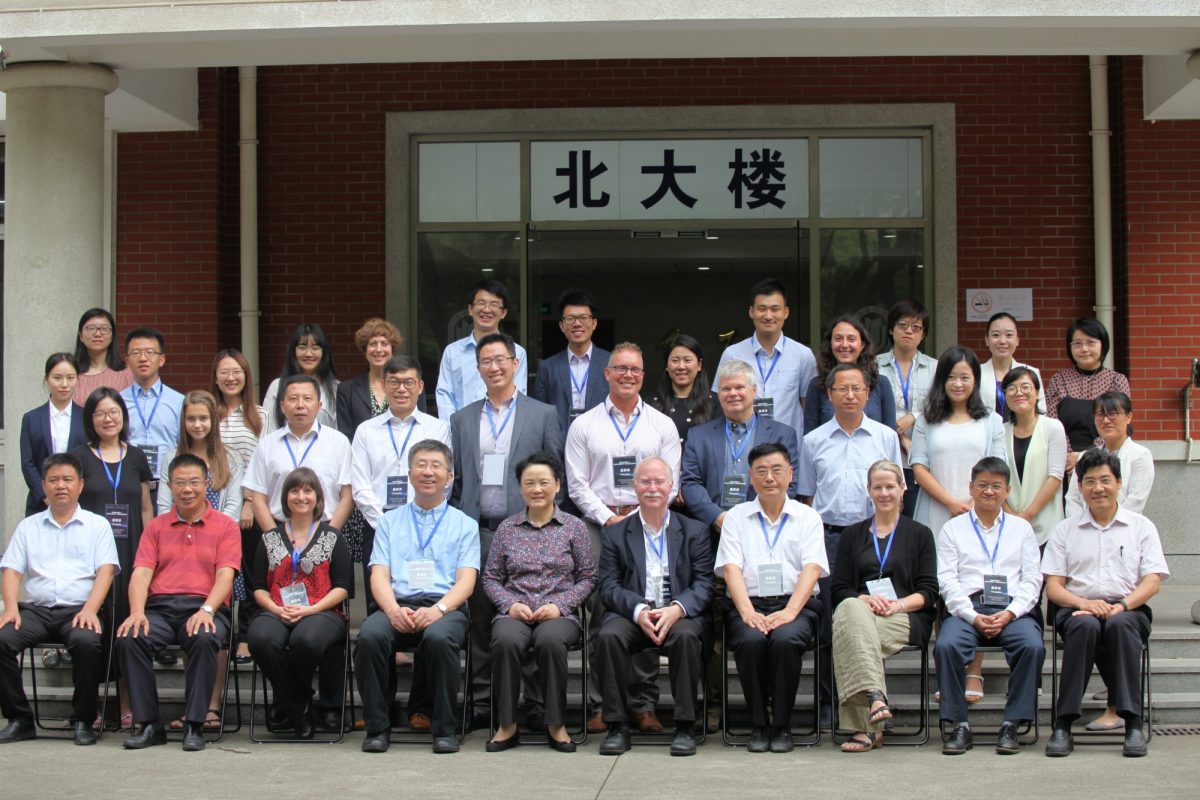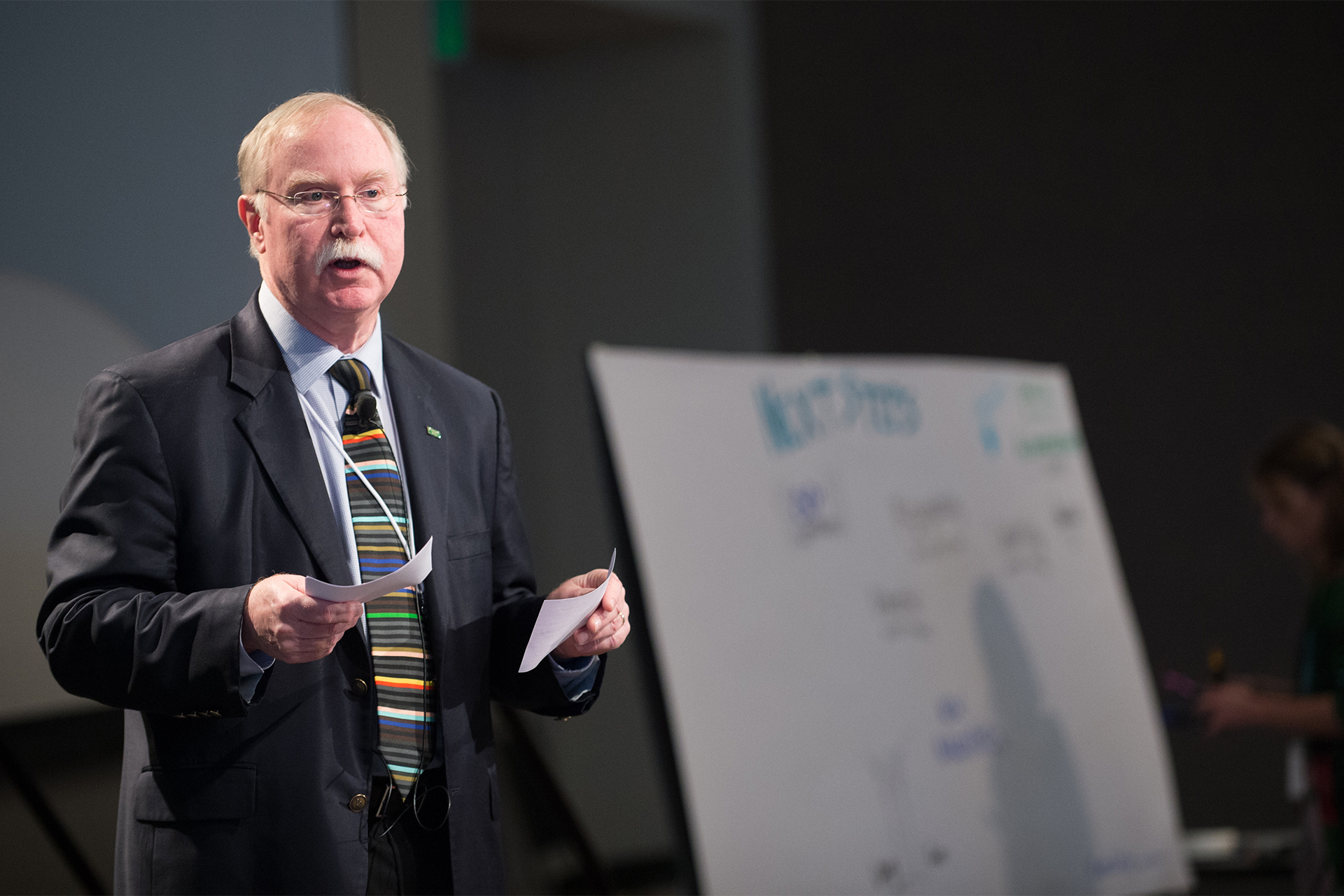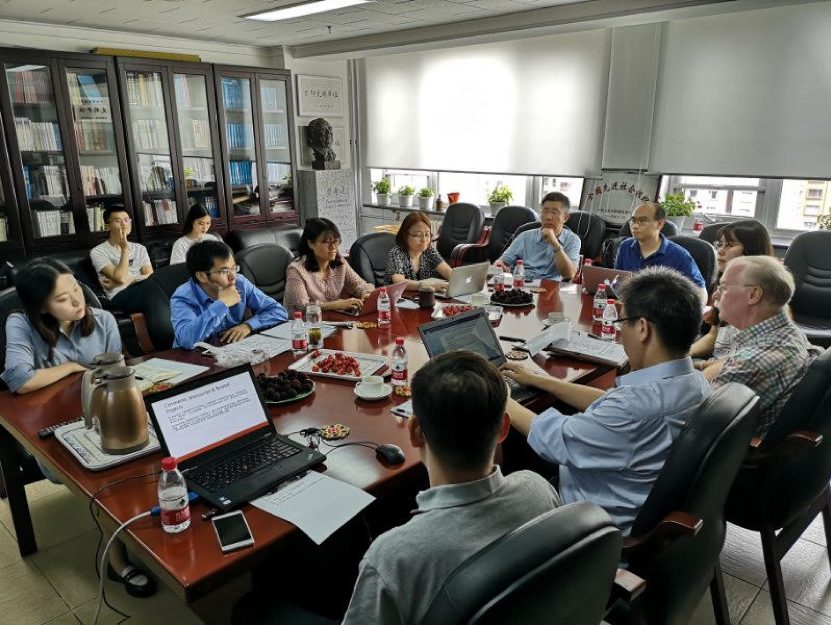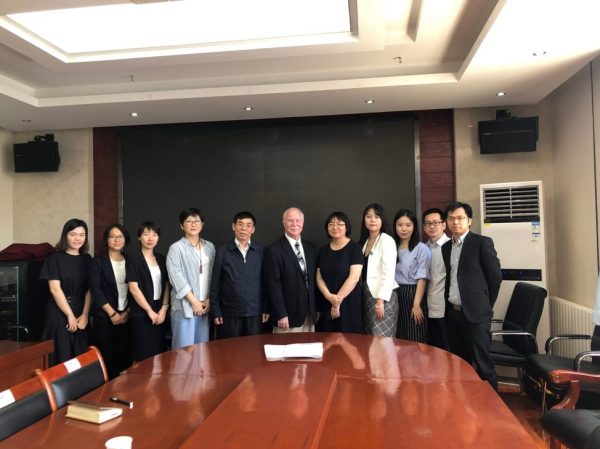
“If your vision is for a year, plant wheat. If your vision is for ten years, plant trees. If your vision is for a lifetime, plant people.” – Chinese Proverb
Show respect by arriving early, but do not expect pre-dinner drinks and appetizers. Cocktail hour is not necessary because networking will occur throughout the two- to three-hour dinner. The table will be round, ensuring face time for relationship building and easy access to the revolving dish-filled center. When you enter the banquet room, take note of who is seated at the 12 o’clock position facing the door. Don’t take a seat until you are directed to that person’s right (next prominent), to their left, or perhaps to the 6 o’clock position (least prominent). Then, wait. Respectfully.
"The Chinese have, from my point of view, perfected the art of the dinner party,” says Bridget Julian, former director of operations for CSU’s Office of Engagement & Extension (formerly the Office of Engagement) and team member of the Sino-U.S. Alliance for University-based Agricultural Extension. “Dinner opens when the 12 o’clock person gets up and makes the first toast; then the party starts. There’s food on the table, but people start to get up.”
Guests leisurely – yet very intentionally – walk around the table and toast each other. Sit down to eat a little bit, then rise when somebody comes over to toast you and talk for a few minutes. Sit down for a bit more dinner, then get up and go make your own toasts.
“Dinner is this up-and-down, out-of-your seat affair. You get to network with everybody in the room over dinner,” says Julian. "It’s actually more fun than our dinner parties, and you get a lot of business done.” Seeking out anyone you wish to talk with, no matter their rank, is perfectly acceptable. Just wait until no one is toasting them, then walk over, offer a toast, and bring up whatever business topic needs to be discussed.

Bottom-up approach gains support from the top down
The Sino-U.S. Alliance for University-based Agricultural Extension was facilitated at the request of the Chinese central government by Dr. Lou Swanson, CSU emeritus professor of sociology and former vice president of Engagement at CSU. The Alliance is a unique collaboration between Chinese agricultural universities and United States Land Grant Universities (LGUs). Both countries recognize their role as global leaders, and recognize the importance of applying agricultural and informational technologies in advancing the sustainability of food systems and rural development.
Historically, China and the U.S. have handled these responsibilities and challenges very differently. China’s government-based ministries are staffed with research scientists and agency officials who direct farmers’ efforts to improve production and disease control. Farmers in the U.S. can use the resources of universities like CSU, whose land-grant mission includes serving society, by readily deploying innovative research to meet local and world demands through university-based Extension agents who live and work in their communities and have access to research faculty and agricultural experiment facilities. Because land-grant university research is highly innovative, community-minded, and collaborative, U.S. Extension agents are able to respond nimbly and with customized solutions to challenges farmers face locally. The U.S. is the only country in the world with agricultural and rural development Extension services that are completely university-based.
The bottom-up approach of university-based Extension services, specifically that of CSU’s Office of Engagement & Extension, has gained traction in China the last few years. In 2016, Swanson received a call from China’s Ministry of Science and Technology (MOST). MOST had asked the United States Department of Agriculture (USDA) to sign a protocol updating a 2002 agreement around agriculture and information exchange. The addition provided an opportunity for technology transfer and Extension collaboration.
With the support of then-President Tony Frank, Swanson worked with LGU Extension colleagues to create an Alliance between a dozen U.S. LGUs and 39 Chinese agricultural universities. What are now called New Rural Development Institutes (NRDIs), combinations of Extension outposts and experiment stations, are located throughout rural China to work directly with farmers. NRDIs also work with, but not for, China’s Ministry of Agriculture and Rural Affairs (MARA).
U.S. and Chinese Extension faculty learn from one another as they support their local communities and address global environmental and agricultural challenges. Chinese delegations have visited CSU’s Fort Collins campus and toured Extension offices and rural communities throughout the state, and Swanson has visited 11 of the original 15 Chinese Alliance universities.
In 2018, the Chinese Academy of Social Sciences (CASS), well known for its rigorous standards for participation, invited CSU’s Office of Engagement and Department of Sociology to co-host an international conference “The Revitalization and Technological Transformations of Rural Communities: Agricultural Extension, Rural Development, and Agrarian Change in the Developing World.” That summer, Julian, Swanson, and Sociology faculty members traveled to Shanghai for the conference and then to Beijing for meetings. Dr. KuoRay Mao discussed social sustainability and community development, while Dr. Lynn Hempel presented her process-based model and Dr. Jeni Cross offered expertise on teaching community-based research courses. Dr. Michael Carolan presented his research findings on how food systems in the U.S. help bridge rural-urban divides. Dr. Pete Taylor discussed his work with agricultural water conservation stakeholders, and Mao presented his case study of medical waste management and governance in rural China.
Alliance members continued to work together despite geopolitical tensions that began to increase between the two countries around the same time the Alliance was forming, and collaborations continue today. This fall CSU’s Department of Sociology welcomed Dr. Xiaopeng Pang, a visiting scholar from the School of Agriculture and Rural Development at Renmin University of China. She researches development economics, anti-poverty and rural development, gender equality and economic development, and public policy. Dr. Pang is on campus through January 2022 to become more familiar with university-based Extension following several years of collaboration with Mao and Swanson.
Seizing windows of opportunity
In 2012 Swanson’s longtime friend and CSU College of Natural Sciences colleague Dr. Wei Gao’s Chinese student exchange program was ramping up. “Wei had built a very strong and highly visible program with China,” says Swanson. As China opened up to foreign partnerships, then-President Frank supported Swanson in building an international program focused on Extension consistent with the one Gao was creating. “Wei deserves recognition as the person who really initiated the Alliance,” says Swanson.
Building upon his early experiences with international development and the Peace Corps, and later with the Russian Federation, Swanson welcomed the opportunity to work with China as it created university-based Extension. “The way Lou liked to work was to talk with folks on the ground first, work with universities directly. Then, figure out how to access federal levels of collaboration,” says Julian.
[Lou] built the Alliance to create an academic community to share evidence-based knowledge. This reminds people that even though the U.S. and China are competitors, they still need to work together for the greater good. We only have one world.”
Globally, agricultural and rural development Extension services are located in government ministries of agriculture, such as in China, not within their agricultural universities. The Chinese government initiated a national policy to engage their universities in a similar way to those of the U.S. LGUs, a major organizational innovation for Chinese universities. This also was an extraordinary opportunity for CSU in facilitating collaboration among Chinese and U.S. universities.
Mao, associate professor of sociology and another integral member of the CSU team, recalls Swanson going into meetings with top-level Chinese government bureaucrats in Beijing where Communist red stars were planted on surfaces throughout the room and portraits of Communist leaders hung up and down the walls. “He would be selling American democratic ideals to these leaders without blinking an eye,” says Mao. “Lou persisted in pushing for the bottom-up approach in the most top-down nations on this planet.”
“Change and transformation are not scary to Lou. He seeks them out and embraces them,” says Mao. “He built the Alliance to create an academic community to share evidence-based knowledge. This reminds people that even though the U.S. and China are competitors, they still need to work together for the greater good. We only have one world.”

The early bird gets the award
Both Julian and Mao comment that Swanson is literally always early – to the airport, down the elevator, to delegation gatherings, and of course in his thinking. “He thinks nine moves down the chess board,” Julian says.
For initiating leading edge collaborations, Swanson was recently recognized with The Yellow Mountain Foreign Advisor Award – the highest recognition for a foreign national working in the Anhui province of China. Anhui Agricultural University is China’s university liaison.
“This award is a very positive outcome of how CSU’s Office of Engagement was involved in this Anhui initiative,” says Swanson. “Our team was deeply involved with a lot of talent at CSU. The award belongs to a lot of people.”
Julian managed details large and small for Swanson’s many projects, communications, and itineraries. Mao built connections with Chinese faculty and policymakers to collaborate on Extension trainings and to help elevate foreign Extension agents to the same cultural status as research and teaching faculty on their respective campuses. Yvonne Bridgeman, Randy Boone, Lee Summers, Tina Zhang, Ying Cheng, and many colleagues beyond CSU all played important roles as well, while Tony Frank, CSU’s Provost Rick Miranda, and the Office of International Programs provided support.
“For him to receive this award, it really means that the real-life accomplishments, progress, and contributions he’s made really trump the political issues,” says Mao.
Transcending time and politics to make the world a better place
“With the Sino-US Alliance,” says Mao, “the concept of bottom-up university-based Extension at CSU has the potential to increase the effectiveness of national and multi-national programs targeting local problems related to foods systems and rural development, for generations.”
Swanson added, “My position at CSU provided me an extraordinary, once-in-a lifetime opportunity to work with many CSU colleagues and expand CSU’s influence in sociology, agriculture and Extension through meaningful collaborations in China, Ethiopia, Kenya and the Russian Federation.” Now retired from CSU, he continues to work with Anhui Agricultural University.
Building relationships, investing time and energy, respecting cultural differences, trusting one another, and being early are cornerstones of Swanson’s decades of impactful work and the Alliance he helped create – just as they are important parts of the Chinese dinner party tradition that helped bring U.S. and Chinese Extension communities together to improve lives worldwide. As the saying goes, “if two people cannot even eat a single meal together, how will they be able to converse as like-minded fellows?”

Navigating Borders
From water to dance, science to film, clay to gender, the liberal arts helps us navigate the borders in our lives that are physical, metaphorical, or cultural.

